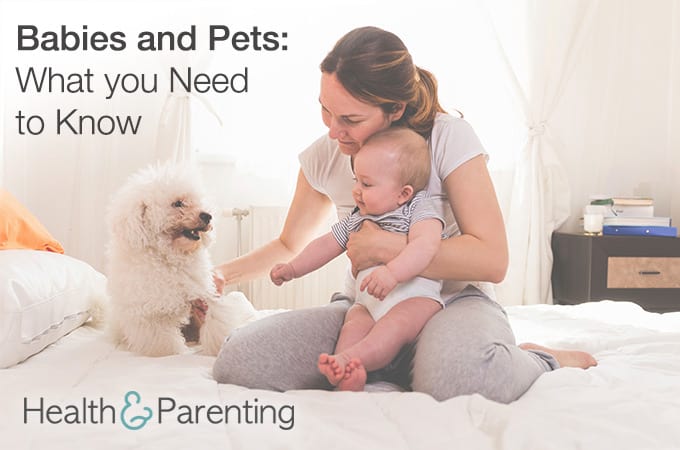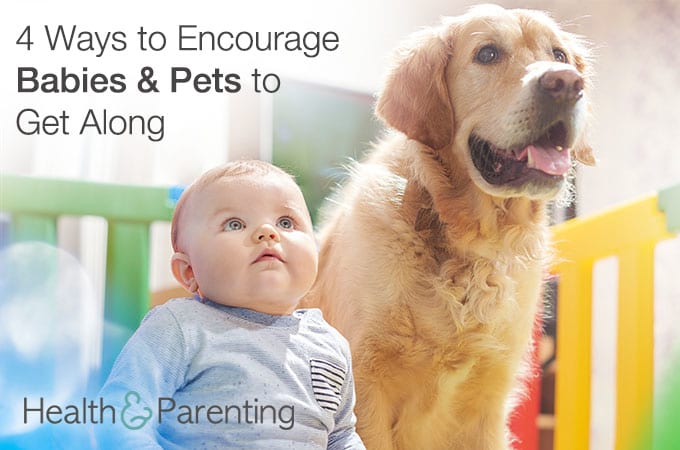Babies love pets. Those furry, funny little critters can provide hours of entertainment simply by just existing. Of course, not all babies love all animals. Your baby may be scared of dogs that come running over at the park or of the huge horses in the fields when you go for a walk. It’s important that you teach your child how to safely interact with all different kinds of pets. Here are some things you need to know about babies and pets:
- Constant supervision is necessary
You should never leave your baby alone with a pet, no matter how lovely that pet is. Pets are animals and even after years of domestication, that adorable dog could lash out when your back is turned. Babies and young children don’t know how to properly interact with animals and so you need to supervise for their safety too. A pet could easily become hurt or injured if left alone with a well-meaning child. Scared or hurt pets are more likely to lash out, putting your child at risk as well. Whenever your baby is interacting with an animal, make sure you are present and paying attention.
- Always ask to pet dogs
Not all dogs love to be stroked. There are plenty of dogs out there with behavioral problems or difficult backgrounds who may be wary of strangers, especially small children. You should always ask before petting a strange dog, even if it looks friendly enough. The owner will quickly be able to let you know if it’s a bad idea. Your baby isn’t old enough to ask for herself just yet, but seeing you do this will pass the habit on to the next generation. If your child grows up knowing you must always ask the owner before approaching an unknown dog, this reduces the risk that your child will one day try to stroke an aggressive dog.
- Wait for animals to come to you
Animals are easily startled. The best way to start a relationship with an animal is by letting that animal come to you. Animals can become scared when toddlers and small children bound over to them enthusiastically, so lay the groundwork now for a child who knows how to make friends with cats and other animals. Teach your child to sit still and try to attract the animal’s attention without sudden movements or loud noises. Modeling this behavior yourself is the best way to teach your baby how to behave around animals so make sure you always take your own advice.
- Be respectful
If an animal seems frightened, you need to stop the interaction no matter how much your child is enjoying it. This may upset your baby momentarily but it is an important lesson in empathy, respect and compassion. You can explain to your baby why you have said goodbye to the animal to help him understand that animals have feelings. Similarly, you should also respect the feelings of your baby during any interaction. If your baby seems scared of a dog, do not force your baby to stay near the dog. Instead, lift your baby up so he’s safely out of reach and talk to him about how much you like the dog. You may continue to pet the dog if you wish, but you shouldn’t force a scared child to interact with an animal.
- Be gentle
You will probably spend a good two years of your life asking your child to “be gentle”. This is because, well, young children aren’t always very gentle. If you notice your baby is being a bit too rough with the animal, gently guide her hand to give gentle strokes and explain animals like gentle hands. It might take your baby a while to understand this, but it’s important to keep repeating the ‘gentle hands’ message at this stage.
Does your baby have a favorite animal?
Written by Fiona (@Fiona_Peacock), mother, writer and lover of all things baby related.
This information is not intended to replace the advice of a trained medical doctor. Health & Parenting Ltd disclaims any liability for the decisions you make based on this information, which is provided to you on a general information basis only and not as a substitute for personalized medical advice. All contents copyright © Health & Parenting Ltd 2016. All rights reserved.











